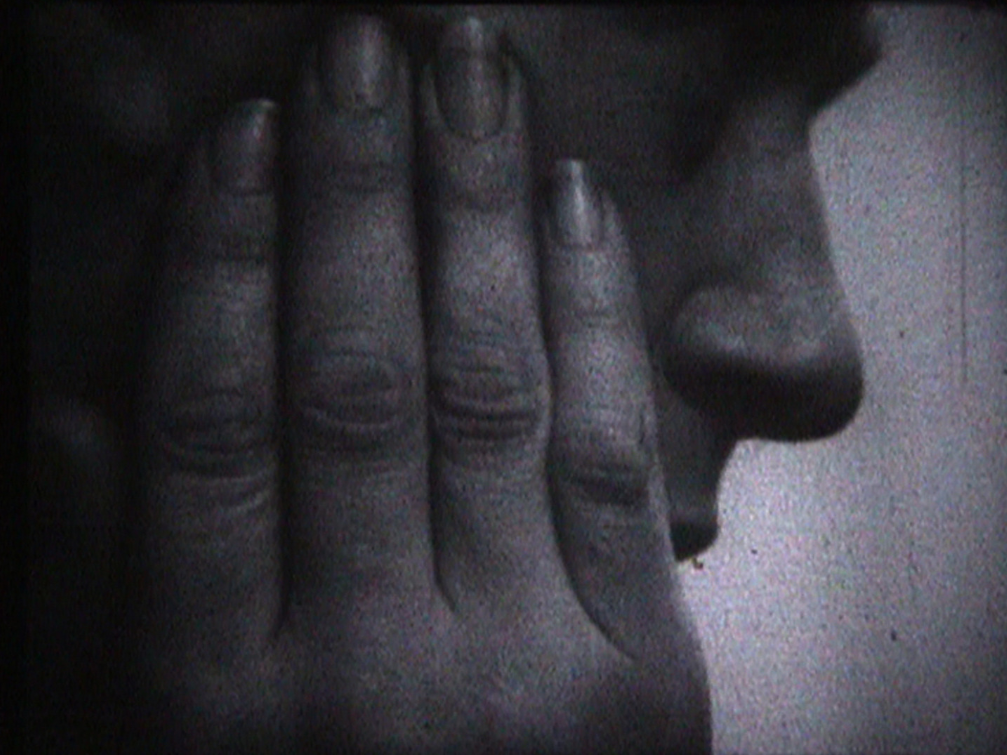
“Luke Fowler’s film What You See Is Where You’re At focuses on an experimental community of patients with mental health problems that was founded in 1965 at Kingsley Hall in Bow, East London, by the pioneering Scottish psychiatrist R.D. Laing. The treatment offered to patients at Kingsley Hall was unorthodox in comparison to other institutions: they were given an unprecedented level of autonomy and were encouraged to explore their mental states, and to overcome their problems without the use of drugs or physical restraints. The film combines archival footage shot in Super 8, 16 mm and digital video with still photographs and video recorded by the artist.
‘It was when I put these materials together that I became interested in the ruptures in these different modes of information. One of them was a DIY archive that was made by the patients and residents of Kingsley Hall with no structure or pretenses to being broadcast. Then there was my own filming, which had a purpose, and this television footage, which had a purpose. Seeing this stark contrast, I recognized the ideological differences between the materials. This got me interested in making films that in some way criticized the prevailing norms of how documentary film is structured.’ (Luke Fowler, quoted in Maerkle 2013.)”
Natasha Adamou1
“Fowler’s meticulously researched subjects are all figures who challenge socio-cultural norms. Intuitively applying the logic, aesthetics and politics of his subjects onto the film he is making about them, Fowler creates atmospheric, sampled histories that reverberate with the vitality of the people he studies. [...] Fowler takes us on a journey where there is no fixed objective truth but rather a critical response to the idea that documentary can offer us this single truth. He takes us through a dense layering and enmeshment of archive footage, photographic material, images, sketches, sound, music and interviews as quests for information. It all moves across waves with highs and lows and intervals and pauses and silences. His films don’t tell a story, they are part of a story, there is a feeling of self-organisation. Challenging the classical conventions of documentary film, Fowler subverts its structural syntax and explores the limits and conventions of documentary filmmaking. He aligns himself with the tradition of Free Cinema and the British New Wave of the late 1950s and 1960s. Being asked ‘Who is/are your personal hero(s) or heroine(s) / influences?’ He answers: ‘No heroes anymore. My influences change so regularly that it would be folly to attempt to summarise, but here are a few at random: Robert Beavers, Toshiya Tsunoda, Hollis Frampton, Peter Hutton, Frederik Wiseman, Lee Patterson, Cluster, Alvin Lucier, Helmut Lachenmann, Arnold Brown, Eric La Casa, Barry Burns, Delia Derbyshire, Franco Battiato, Alasdair Roberts, Hugh Davies, RD Laing, train journeys. As sentimental as it sounds, my most abiding influence is walking with friends and family.’”
Hans Ulrich Obrist and Beatrix Ruf2
“The experience of watching one of Fowler’s films is akin to the process getting to know someone, with all its attendant paradoxes, hiatuses and leaps of faith. In terms of technique, a work’s formal register might swing from the meditative to the ecstatic, with varying temporalities evoking a slow curious eye or a manic epiphany. For all their complexity, there remains a paradox of clarity in Fowler’s works: despite – or perhaps thanks to – the multiplicity of styles and rhythms and the diversity of material sources and points of view, they give off an impression of transparency that hints at the possibility of getting to the core of their subject.”
Ellen Mara De Wachter3
- 1Natasha Adamou, “Luke Fowler. What You See Is Where You’re At, 2001,” Tate Website, June 2014.
- 2Arles, les rencontres de la photographie
- 3Ellen Mara De Wachter, “Luke Fowler. The paradox of clarity,” Flash Art, 2009.

